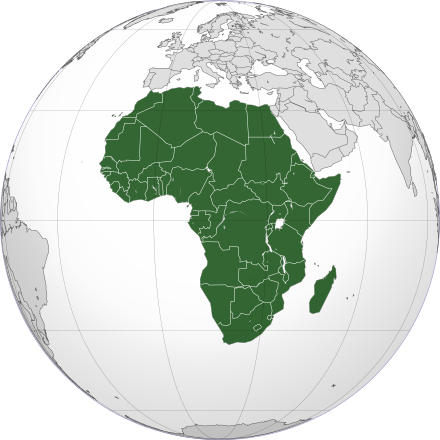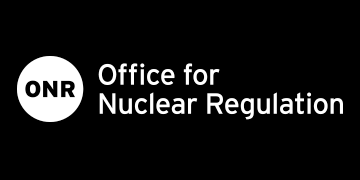Following the Fukushima nuclear disaster in March of 2011, Germany made a commitment to shut down all of its nuclear power reactors. Eight of the seventeen nuclear power reactors in Germany have now been shut down and the rest are scheduled to be shut down by 2022. While Germany will no longer be generating electricity from nuclear power after 2022, it will take decades to deal with the legacy of nuclear power in the form of spent nuclear fuel and other radioactive wastes.
For decades, a variety of nuclear wastes have been stored in the old Asse potash mine over fifteen thousand feet beneath the northern Germany state of Lower Saxony. Low to medium level nuclear waste was carelessly dumped in the old mine in the 1960s and 1970s. Following that, the storage was more organized. Most of the waste is from nuclear reactors but there are also some radioactive wastes from hospitals and research facilities. Questions have been raised but not definitively answered about whether there may be high level nuclear waste in the mine. Currently, there are one hundred and twenty-six thousand barrels of radioactive waste stored in the Asse mine.
Potash mining at Asse was shut down in 1965. Until the end of the 1970s, radioactive materials were placed in the mine ostensibly for “research purposes” but the mine was a really repository. The mine has been deteriorating for a long time. About thirty-five hundred gallons of water flow into the tunnels of the mine every day.
In 2010, a decision was made to remove the barrels of waste from the mine. There is a danger that the mine could collapse and allow the radioactive wastes to come into contact with the groundwater in the area. The old shafts and layout of the Asse mine do not meet the current legal standards for storing nuclear materials.
It was estimated that it would cost at least a billion dollars to clean out the mine. However, many experts have expressed doubts that it will be possible to recover all the barrels from the old mine shafts. Germany founded a federal company called Bundesgesellschaft Für Endlagerung (BGE) for radioactive waste disposal in 2016.
Thomas Lautsch is one of the experts at BGE. He told the visiting German Environment Minister Svenja Schulze on a recent tour of the mine, “We would have to build a retrieval mine, which is more than simply just a new shaft. We would also need an interim storage facility for the waste, and we would have to create many new shafts to gain access to the individual chambers. By about 2024, we have to start construction.” He added that he expected the construction phase of the project to take eight or nine years.
In essence, an entirely new mine will have to be developed around the old mine in order to just retrieve the barrels of waste. If everything goes according to plan, removal of the barrels could begin in 2033. Schulze admits that this timeline for removal of the barrels is much longer than desirable. But, she said that safety must be considered as well as speed. It will be revealed over the next few years whether or not a safe and speedy extraction of the barrels of waste at the Asse mine is even possible.
Blog
-

Radioactive Waste 378 – Germany Has To Deal With Nuclear Waste Stored In The Old Asse Potash Mine
-

Geiger Readings for Feb 08, 2019
Ambient office = 84 nanosieverts per hour
Ambient outside = 114 nanosieverts per hour
Soil exposed to rain water = 114 nanosieverts per hour
Crimini mushroom from Central Market = 72 nanosieverts per hour
Tap water = 94 nanosieverts per hour
Filter water = 90 nanosieverts per hour
-

Nuclear Reactors 655 – Russia And China Working On Exporting Nuclear Technology To African Nations
I have briefly mentioned Africa on this blog in the past. There are fifty-two countries in Africa but only one of them, South Africa, has a nuclear reactor. Countries that manufacture nuclear reactors and produce nuclear fuel, especially Russia and China, see Africa as a great future market for nuclear power to provide desperately needed electrification to the developing countries there. Seven sub-Saharan African nations have signed memoranda of understanding (MoU) to develop their own nuclear power plants with help from Russia.
Two years ago, Ethiopia signed a MoU with Russia for the construction of a nuclear power plant and a nuclear research reactor. Ethiopia has been aggressively working on bringing electricity to its citizens to meet the rising demand. It also hopes to become one of the biggest exporters of power on the whole continent.
Under a five-year development plan that started in 2015, Ethiopia is working to add seventeen thousand megawatts to the current national capacity of four thousand megawatts from hydro, wind and geothermal sources. The most ambitious part of the plan is a project to build the Grand Renaissance Dam (GRD) on the Nile River. This dam will provide six thousand megawatts at full capacity when it is completed by 2023. However, there are concerns that as droughts become more common, the GRD will not always have sufficient water to operate at full capacity. Plans for an Ethiopian nuclear power plant are in the “pre-feasibility stage” but government officials say that they are serious about move forward with nuclear projects.
There are forty-eight countries in Africa that are considered “sub-Saharan.” Collectively they have eighteen times the population of Spain while generating the same amount of electricity as Spain. Nearly six in ten of the Africans in sub-Saharan nations do not have access to electricity. There is a strong push across Africa to solve the power problem with massive investment in nuclear power.
The other African countries that signed MoUs with Russia’s ROSATOM include Sudan, Kenya, Uganda, Nigeria, Rwanda, Zambia and Ghana. The content of the MoUs varies from talk of reactor construction to helping with nuclear feasibility studies and training of nuclear plant staff.
ROSATOM says that its plans for managing spent nuclear fuel and other radioactive waste vary from country to country with details to be worked out on a country by country basis further along in later stages of nuclear construction projects. They claim that such waste handling procedures will be “in strict compliance with international law.”
China has also been active in peddling nuclear power solutions to African nations. They have deals under development with Kenya, Sudan and Uganda.
The strong interest in nuclear power in sub-Saharan Africa stems from the lack of fossil fuels for internal use. There is not much coal in Africa and the natural gas from the fields in Nigeria and Tanzania is exported for profit. Population increase and pressure to reduce greenhouse emissions also play a part in encouraging the development of nuclear power.
One big concern that some critics have with major nuclear power projects in some African nations has to do with the presence of weak governments and rebel groups. Spent nuclear fuel could be used to build dirty bombs or reprocessed into plutonium to build nuclear weapons. Forty African nations have joined the Treaty of Pelindaba to create a nuclear-weapon-free zone in Africa. Another concern is whether or not Russia will really meet its commitment to remove spent nuclear fuel from its African clients.
Even the proponents of African nuclear power admit that it will not be easy to quickly build the infrastructure necessary to generate and distribute significant nuclear power in Africa given the resources available for such projects. -
Nuclear News Roundup Feb 07, 2019
China to build 4 nuclear aircraft carriers to catch up with US Navy, experts say. Economictimes.indiantimes.com
-

Geiger Readings for Feb 07, 2019
Ambient office = 95 nanosieverts per hour
Ambient outside = 121 nanosieverts per hour
Soil exposed to rain water = 118 nanosieverts per hour
Carrot from Central Market = 91 nanosieverts per hour
Tap water = 84 nanosieverts per hour
Filter water = 80 nanosieverts per hour
-

University of Utrecht Developing A New Dual Image System For Medical X-ray And Gamma Ray Diagnosis And Treatment.
I have mentioned medical images with radioactive isotopes occasionally in this blog. Today I am going to delve into detail on a recent development in using radioisotopes in diagnostics and treatment. Researchers at the Utrecht University in the Netherlands have built a prototype device that combines a fluoroscope, a flat panel X-ray detector, combined with a gamma ray camera. They have used computer simulation to show how the device could be improved.
Usually when creating such a hybrid device in the past that combined two different imaging modalities, one of the modalities was applied after the other. The problem with this approach was that if the patient moved at all between the application of the two different techniques, the resulting combination of images could be misaligned.
The new device from the Utrecht team captures images from both techniques simultaneously which insures that the two images are properly aligned. This new device may be able to supply clinicians with anatomical data that cannot be captured by medical imaging systems currently in use.
There was a previous attempt to combine fluoroscopy and nuclear imaging to simultaneously capture both images. Four gamma cameras with pinhole collimators were placed around the X-ray source on the opposite side of the patient from the X-ray detector. In order to create the final gamma image, the distribution of energy from the gamma emitter had to be combined into one image from the four separate images. Sandra van der Velden, the first author of the report on the Utrecht work, said, “This was computationally quite demanding, required complicated hardware integration, and resulted in a lower resolution of the nuclear images.”
The Utrecht team has shown that they can capture useful images even when a single gamma camera with a cone-beam collimator is positioned behind the X-ray detector. Composite images that are created in this way are naturally co-registered. This means that diagnostic and therapeutic radioisotopes can be tracked within the anatomical context shown by the fluoroscopy.
X-ray detectors are sensitive photon energies of 30-120 kiloelectron volts. Gamma ray detectors are sensitive to photon energies of 140 kiloelectron volts. This means that in the new device, the gamma photons are captured after they pass through the X-ray detector so system sensitive for gamma rays is degraded. In order to counter this, the Utrecht team has removed some of the lead shielding and structural aluminum from the flat panel X-ray receiver.
The Utrecht experiments with radioactive sources in moving phantoms showed that the interference by the X-ray detector reduced the sensitivity by between 45% and 60%. However, the images were still free of artifacts and were useful. The spatial resolution of the gamma camera was not affected. The presence of a radioisotope in the field of view of the X-ray detector had no impact on its’s performance.
Computer modeling indicates that the performance of the new device could be improved by reducing the thickness of the aluminum in the X-ray detector. This would reduce the attenuation of the gamma ray signal by 27% to 35%. This reduction of thickness in the X-ray detector would permit the gamma ray camera to be moved closer to the patient which will improve its resolution.
While, the new device being developed in Utrecht will have broad application, the Utrecht team is focusing on a particular medical procedure called radioembolization for liver cancer. Currently nuclear imaging is used to predict the uptake of the radioisotope in the liver. Then, up to a week or more later, the treatment is carried out and monitored by the fluoroscope.
Not only is the delay inconvenient to the patient, a catheter has to be inserted twice which carries its own dangers. If the hospital can carry out both procedures in the same day with the new device, it will be more convenient, safer and the results of imaging more accurate than the current technique.
Van der Velden said, “We are currently working on a clinical prototype, which is at this moment being constructed. We plan to perform a clinical trial with that prototype, to show that radioembolization procedures can be improved. This will open up the possibility to perform it in one day, instead of the current two-step process, which takes one or two weeks.” -
Nuclear News Roundup Feb 06, 2019
Kansai Electric Power Company has informed Fukui Prefecture that the restart of units 1 and 2 of the Takahama nuclear power plant and unit 3 of the Mihama plant has been delayed as work to bolster safety measures will now take longer than originally expected. World-nuiclear-news.org
Work to stabilise a 1688-foot (515-metre) long tunnel containing contaminated equipment from historic plutonium production activities at the US Department of Energy’s (DOE’s) Hanford site in Washington State is over 75% complete. World-nuiclear-news.org
South Korea’s Nuclear Safety and Security Commission has approved of the start of Shin-Kori Unit 4, the regulator said on February 1 following an inspection by the Korea Institute of Nuclear Safety. Nuclearstreet.com
Belgium’s National Agency for Radioactive Waste and Fissile Materials (Ondraf/Niras) today filed an application for the construction of a facility for the final disposal of low- and medium-activity nuclear waste. Nucnet.org
-

Geiger Readings for Feb 06, 2019
Ambient office = 99 nanosieverts per hour
Ambient outside = 137 nanosieverts per hour
Soil exposed to rain water = 135 nanosieverts per hour
Carrot from Central Market = 74 nanosieverts per hour
Tap water = 91 nanosieverts per hour
Filter water = 86 nanosieverts per hour
-

Nuclear Reactors 654 – U.K. Nuclear Power Reactors Are Aging And Some May Not Survive For The Full Term Of Their Current Licenses Term – Part 2 of 2 Parts
Part 2 of 2 Parts (Please read Part 1)
Martin Freer is the head of nuclear physics at the University of Birmingham and the director of the Birmingham Energy Institute. He said, with respect to the aging nuclear reactor fleet in the U.K., “It is clear they are showing their age. When they were originally built, they weren’t built to operate as long as they will.” He went on to say that the regulation of the nuclear power plants was very tight and there was no danger to the public or the environment, but there was definitely a need to shutter the old plants and build new ones. He also said that he hopes that the aging plants would make to their scheduled permanent closure dates in the 2020s but he was afraid that some would not. “It may just be a run of unfortunate incidents, or it might be a trend of reducing reliability. My suspicion is not all of them will make it through to the end.”
EDF has said that it believes that its investments in maintenance will allow the plants to continue to operate at capacity for their licensed lifespans. EDF has spent over one hundred and thirty million dollars in the past six years on the issue of graphite cracking. EDF bought the nuclear power plants in 2008 and their output increases until 2016 but is now declining.
Brian Cowell is the managing director of generation at EDF. He said, “EDF Energy’s seven advanced gas-cooled and one pressurised water nuclear power stations [Sizewell B] are delivering at ever better levels thanks to sustained investment and the expertise accumulated over more than 40 years of operation.”
Several of the old power plants are currently going through safety reviews by the U.K. Office of Nuclear Regulation. Heysham 1 and Hartlepool both had their periodic safety review in January. Heysham 2 and Torness will have their reviews next January.
The Japanese nuclear technology firm Hitachi has been working on a nuclear power project for the Welsh island of Anglesy. It has just notified the U.K. government that it will cancel the project unless the U.K. commits new funding to allow the completion of the twenty-six billion dollar project.
Last November, another Japanese nuclear technology company, Toshiba, abandoned a U.K. nuclear power project in Cunbrai. U.K. utilities have already pumped hundreds of millions of dollars into the National Grid to build the transmission lines that would have been needed to distribute the power to be generated by the planned power reactor. U.K. rate payers will be paying for those wasted hundreds of millions of dollars with surcharges on their electrical bill for decades to come.
One of the main reasons that these projects may be or have been abandoned is that the cost of renewable energy projects has been dropping rapidly. It is now cheaper to build renewable energy projects than nuclear power projects. Greg Clark is the government minister in charge of the U.K. energy board recently told Parliament, “The cost of renewable technologies such as offshore wind has fallen dramatically, to the point where they now require very little public subsidy and will soon require none. We have also seen a strengthening in the pipeline of projects coming forward, meaning that renewable energy may now not just be cheap, but also readily available.”
